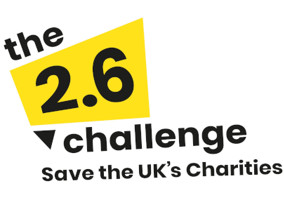While most fundraisers feature the word “creativity” somewhere in their CV or LinkedIn descriptions, not many expected having to demonstrate it in the middle of a world-shattering pandemic. While many charities are seeing their income channels dry up, the need for their services is skyrocketing. Consequently, fundraisers have been called upon to think of new ways to get supporters involved without breaking social distancing rules.
Rethinking fundraising
Reimagining activities as online events or campaigns had to be done quickly. Against Breast Cancer (ABC) was among the first charities to launch an extensive list of stay-at-home fundraising activities after the lockdown. These include a movie club, a sports hub to share training tips, and Get Your Pinks On – a campaign encouraging people to do a clean out, fundraise and donate items once it is safe for the charity to collect them.
So far, virtual fundraising has raised about £8,800 for the charity in around a month.
ABC’s head of fundraising Kelly Gibson says that it helps to be proactive and to play to your strengths. “We tried to react very quickly and think outside the box. We looked at the toolkits we had and how we could develop them. For example, one of our biggest income streams is recycling – clothes, shoes, bras and so on. We considered how we could continue to do that even though we couldn’t actually pick up collection bags. So we decided to do a spring clean campaign.”
Virtual fundraising presents many complications, but an advantage is that charities can be flexible and give supporters more freedom. Like many charities, ABC encouraged its supporters to take part in the 2.6 Challenge and allowed donors to think freely about what they wanted to do to raise funds. Gibson says that together with running or cycling 26 miles, supporters have pledged such things as planting 26 sunflowers for the charity.
Standing out from the crowd
The current virtual fundraising landscape is a very crowded space, so some charities are relying on fun and quirky ideas to stand out.
Plan UK is taking shaving challenges one step further, by asking supporters to let their kids dye or restyle their hair in the Home Hairstyle Challenge.
Alan Gosschalk, fundraising director at Plan UK, who has raised more than £1,500 for the campaign and currently sports bright purple hair styled by his offspring, says the idea was to do something both easy and timely.
He says: “We are a children’s charity so we wanted something that children could get involved in. During lockdown, people can’t go to the hairdresser, so this is relevant to a lot of people.
“We thought this was something quite simple to do and a bit of a relief from the coronavirus-heavy content that drives a lot of campaigns.”
Sense of community
Charities relying on community fundraising are having an especially tough time and are looking at creative fundraisers to react.
Youth charity Transitions UK is missing out on around a quarter of its £20,000 monthly income and has launched a fundraising campaign called Beat It, which offers a range of activities for young people and families. One of them is the InHouse Jaibreak, which asks supporters to lock themselves in a room of the house and only come out once they have raised enough for the “bail”.
Ron Overton, chief executive officer at Transitions UK, says: “The current situation is especially hard when you are a small charity and you are trying to get off the ground.
“Since fundraising in the community is impossible, reaching out to your existing supporters becomes more and more important. But our support base is quite small. So we have to be more creative and try to reach people in a different way.
“The Beat It campaign is a way to say, let’s beat the virus by providing additional support for those that are impacted by it – particularly, in our case, vulnerable young people, while trying to overcome our fundraising challenges and replace the £5,000 a month shortfall with online-based fundraising activities.”
Creating engaging virtual events
Replacing an established fundraiser with its virtual version is another straightforward starting point. But it is hard to reach the same levels of engagement or the same results.
Guide Dogs habitually holds a tea party fundraiser on National Tea Day on 21 April, which raised £60,000 in 2019. This year it went virtual and found a pretty effective way to make it more engaging for supporters; it turned the event into an attempt to establish a Guinness World Record for the world’s biggest virtual tea party, asking people to send pictures of their home tea parties and make a small donation.
The charity received more than 5,000 pictures, has raised £16,000 so far and is waiting for official confirmation of the record from the Guinness World Records team. The previous record stood at 500 people.
Fundraising manager Pam White says: “We wanted to find a way to bring our existing supporters who had already planned tea parties, volunteers and new supporters together at this difficult and sometimes quite lonely time.
“We knew that going out with something fun and easy to join, with the excitement of a Guinness World Record to underpin it all, would make us stand out at this time. The tea party setting gave us the ability to really engage and make supporters feel like they were joining together and making a real impact for Guide Dogs.”
Donor support
Keeping in touch and giving back to donors is at least as important as making up for lost income. Many fundraisers have been using virtual campaigns and events primarily as a means to stay connected with supporters, accompanying initiatives with soft fundraising asks.
Cancer Research UK is going in this direction with the virtual version of its signature Race for Life fundraiser. Race for Life normally features hundreds of events across the country, with runners paying an entry fee and raising millions for the charity, so it was hard to gain the same engagement virtually.
Instead, events are being postponed and the charity is holding a home version that people can join for free, doing any physical activity they want.
Launching the campaign, Sarah Pickersgill, head of Cancer Research UK’s Race for Life, said: “We wanted to do something to bring our fantastic community together and thank them for their ongoing patience and commitment. There is no challenge too great or small when it comes to Race for Life at Home. Whatever you do just remember to join in, have fun, stay safe and share your experience with the community online. There’s also an option to donate if you wish.”
Make-A-Wish, a charity that grants wishes to children with critical illnesses, launched one of the first self-isolation campaigns in March. The #StayHomeStars campaign offered supporters a newsletter with creative ideas to entertain children stuck at home. More than 1,350 people signed up.
Head of mass fundraising at the charity Katy Meade says: “We wanted to use our expertise giving families hope and something to look forward to during the darkest of times. As many of our ‘wish families’ have spent a lot of time in isolation already, we also wanted to give back by sharing their stories, experiences and wisdom in our #StayHomeStars newsletters and online content.”
Supporters could donate if they wanted to, but with children’s wishes being mostly on hold, the charity decided to keep the fundraising ask very soft.
Meade says: “It was tempting to launch an emergency appeal, but while we are not in a position to deliver our services, it didn’t feel that it was appropriate to do that. When we are at the point when we can grant wishes again, then we believe we will have a more compelling and a more authentic cause for support.”












